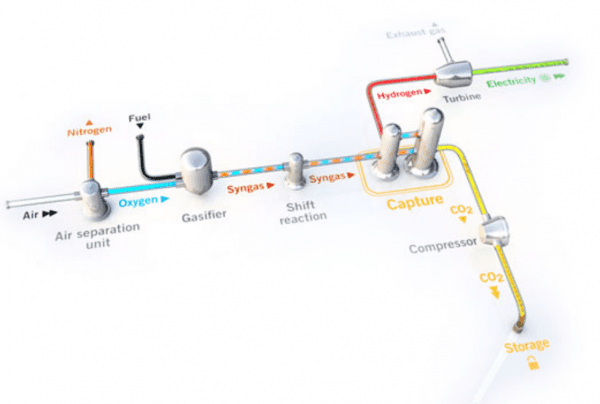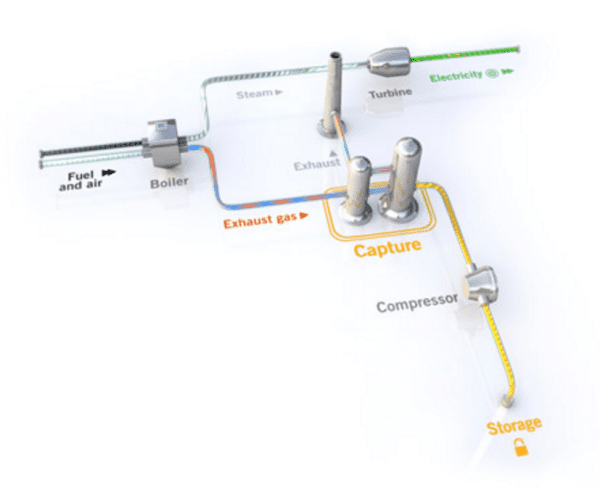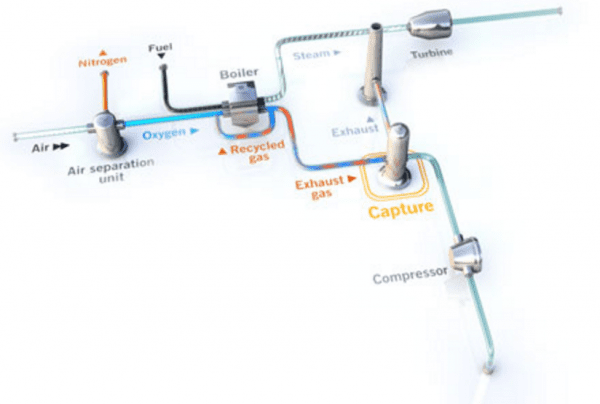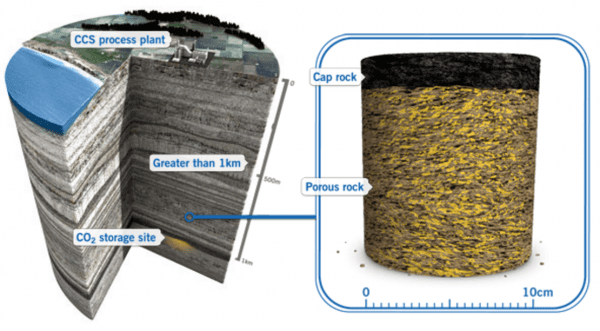Carbon Capture and Storage: The Quest to Reduce Atmospheric Emissions

When the Government of Canada signed the United Nations’ (UN) Paris agreement earlier this year, they joined a global partnership of countries dedicated to reducing atmospheric greenhouse gasses (GHG). Their goal was ambitious – reduce greenhouse gas emissions by 30% from 2005 levels by 2030. Since signing this agreement, the Government of Canada have made several investments into clean, energy-efficient technologies that reduce carbon emissions.
To support their international commitments, the Canadian government has created and maintained several small business funding programs aimed at accelerating energy-efficient technology development/commercialization projects. While these projects are essential for Canada to meet emissions targets, we must also take an approach that eliminates other sources of carbon emissions.
Carbon capture and storage (CCS) is a promising method of reducing the amount of emissions released into the atmosphere. By storing carbon underground in exhausted mines and other storage centres, natural gas and oil producers can effectively limit the amount of carbon they release. Recent carbon capture projects located in Alberta’s oil sands have been able to store emissions equivalent to removing 250,000 cars from the road.
How Oil and Gas Producers Capture Carbon Emissions
For some industrial processes, such as the refinement of oil and gas, carbon emissions are necessary by-product. Current production processes require fuel and oxygen/air inputs to combine and combust. This produces a mixture of exhaust gasses, and (depending on the production process) either steam or hydrogen.
Steam and hydrogen can then be used to generate electricity, while exhaust gasses are emitted into the atmosphere. These exhaust gasses contain a high concentration of carbon dioxide and can be harmful to the environment.
Carbon capture has the potential to change more than oil and gas processing, it could transform the automotive industry, agriculture, and other sources of carbon emissions.
One way of improving this process is to modify the energy production process so that fewer carbon dioxide emissions are released. This article will focus on the three current carbon capture and storage methods.
Method 1: Pre-Combustion
Fuel and oxygen Is converted into a mix of hydrogen and carbon dioxide gasses. These two gasses are then separated so that hydrogen can be burned as a clean energy, while carbon dioxide can be stored.

Pre-Combustion Carbon Capture Method (Global CCS Institute, 2016)
Method 2: Post-Combustion
Fuel and air (oxygen and nitrogen) are boiled together to create a mixture of steam and exhaust gasses. Carbon dioxide, a main component of the exhaust, is absorbed by a solvent and sent for storage. Steam can then be used as clean energy.
 Post-Combustion Carbon Capture Method (Global CCS Institute, 2016)
Post-Combustion Carbon Capture Method (Global CCS Institute, 2016)
Method 3: Oxyfuel
Fuel and oxygen is boiled to create a mixture of steam and exhaust gasses. This steam can be separated in gaseous state to produce a highly concentrated stream of carbon dioxide which can then be stored. The carbon-free steam can then be used to generate electricity.
 Oxyfuel Carbon Capture Method (Global CCS Institute, 2016)
Oxyfuel Carbon Capture Method (Global CCS Institute, 2016)
Carbon Storage: How to Eliminate Atmospheric Carbon Emissions
Once carbon dioxide emissions have been captured, it’s possible to transport and store the gas. Pipelines are the most economical way to transport large quantities of GHG emissions, however it’s also possible to contain and ship them via trucks, trains, and ships.
Pipelines are a common way for oil and gas processors to reduce atmospheric emissions because it provides a reliable way to transport a high volume of carbon to a carbon capture & storage processing plant which can be hundreds or thousands of kilometres away from the main processing facility.
Geographical storage of the carbon dioxide requires injection into porous rock formations and underground geological features where there is space to contain the gas. Some of these injection sites include:
- Saline rock formations;
- Unmineable coal deposits;
- In-use oil wells to enhance extraction; and
- Depleted oil and gas reservoirs.
How is Carbon Stored Underground?
Captured carbon dioxide gas can be compressed into a dense fluid and injected into geological formations with a pressurized pumping system. Carbon capture and storage processing facilities will then drill down more than 1 kilometre into the earth’s surface and inject the fluid beneath a hard cap rock, which prevents leakage.
The porous rock underneath the cap stone is where the compressed carbon dioxide is stored. Connected pockets within the rock will hold the liquid like water contained in a sponge, and will hold it permanently, or until later extracted.

Underground Carbon Storage (Global CCS Institute, 2016)
Carbon Utilization: Turning Emissions into Solutions
Carbon storage is not the end solution to this problem; there is only so much space underground that can be used to contain the liquefied carbon gas. People must also find ways to use or dispose of carbon emissions in an environmentally-sensitive way.
New research is doing just this. In the United States, a project from Georgia Institute of Technology is seeking to create a hydrogen powered car that creates emissions containing hydrogen and carbon dioxide. Hydrogen could be recycled and used to re-fuel the car, while carbon dioxide emissions could be stored in liquid form, then disposed of upon re-fuelling.
In a refined, liquid form, carbon dioxide has many uses. Captured carbon can be used in food and drink products (for flavouring or carbonation), used to create other chemicals, and used for common household goods such as fire extinguishers or aerosols.
Shell Quest Program Brings Carbon Capture and Storage to Alberta
Carbon capture and storage (CCS) technologies are already being used in Canada’s oil sands.
Shell Canada’s ‘Quest’ program is a CCS plant near Edmonton, Alberta that captures emissions from the company’s Scotford Upgrader. The facility converts bitumen into synthetic crude oil, but produces carbon dioxide steam as a by-product.
With CCS, the carbon steam can be condensed and shipped as liquid through an underground pipeline. 80 kilometres away, the carbon-filled liquid is injected 2 kilometres below the ground in a large saline aquifer.
Shell Canada’s Quest project is running ahead of time and under budget. This is a testament to how quickly the technology is advancing.
Since the program began in November 2015, Quest has captured over 1 million tonnes of carbon dioxide emissions. This is equal to removing 250,000 cars from the road, and can be extracted and stored safely each year. Over time, this can amount to huge emissions reductions.
Canadian Government Funding to Reduce Greenhouse Gas Emissions
Thankfully, Canadian government funding is available to promote clean technology development and adoption. Canadian small and mid-sized businesses who are researching, developing, commercializing, or adopting energy-efficient technologies may be able to secure a variety of cleantech grants, including:
- TargetGHG Collaborative Technology Development Program: Supports the development of technologies that have significant and sustainable impact on GHG emissions. Collaborations involving an Ontario-based SME and other research/testing partners may be eligible to receive up to 50% of project expenses, while applicants with fewer than 10 employees may receive up to 67% of eligible expenses.
TargetGHG has a funding stream focused directly on Carbon Capture & Storage Projects
- CME SMART Green Program: Supports Ontario-based manufacturers who are adopting innovative technologies to reduce per-unit GHG emissions. Ontario government grants can reduce the cost of GHG emission assessments while also offsetting a portion of technology purchase costs. Manufacturers not participating in Ontario’s Cap and Trade program may receive up to 50% of project expenses to a maximum of $200,000 per facility, to a maximum $500,000.
- SD Tech Fund: Supports the sustainable development of Canada’s natural resources through the development of disruptive clean technologies. The program provides up to 33% of eligible project costs to a maximum of $15 million in Canadian government grants. Projects should seek to create emission-free, sustainable technologies that revolutionize current natural resource processing methods.
How to Access CleanTech Research and Development Grants
Canadian SMEs developing or adopting GHG-reducing clean technologies have a wealth of funding opportunities available to them. If your business would like to check its eligibility for any of the aforementioned government grants, please contact Mentor Works.

